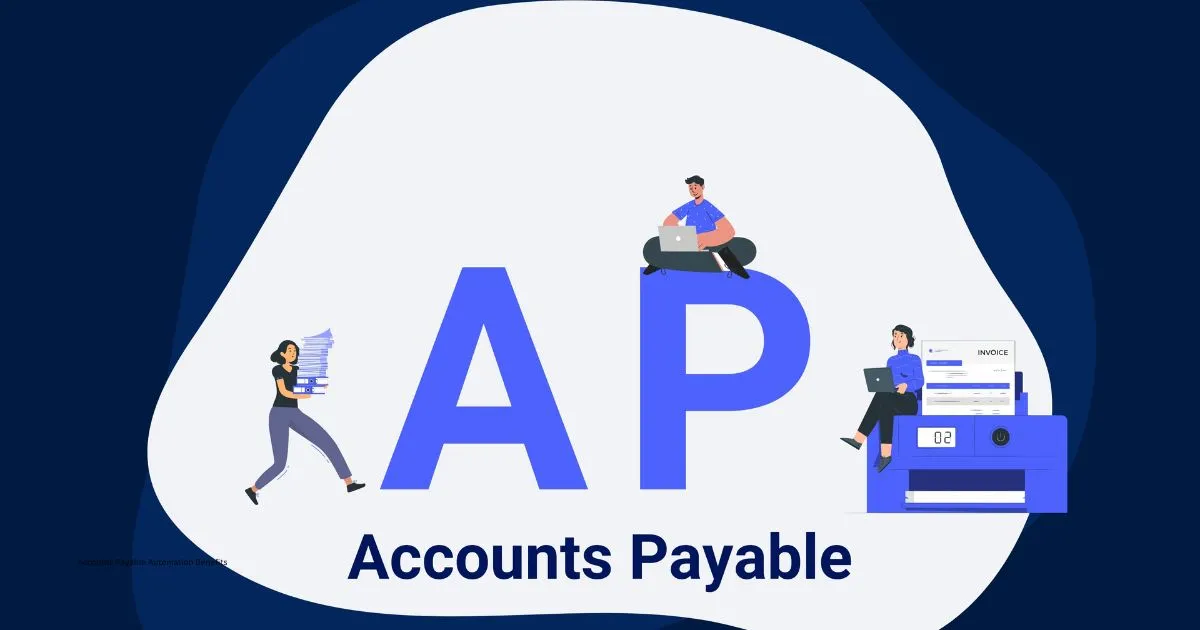Top 9 Accounts Payable Automation Benefits That Save Time, Money & Headaches in 2025

In today’s fast-paced business environment, manual invoice processing is not just outdated—it’s risky, costly, and inefficient. Companies that still rely on traditional paper-based systems for managing accounts payable (AP) often suffer from delayed payments, human errors, fraud risks, and poor cash flow visibility. That’s where accounts payable automation comes in.
Accounts payable automation benefits are not just about speeding up invoice approvals—they’re about transforming your entire financial workflow. From reducing processing costs to improving compliance and boosting supplier relationships, automating AP delivers a range of advantages that directly impact your bottom line.
Whether you’re a small business owner, a finance manager at a mid-sized firm, or part of a large enterprise’s accounting team, automating your AP function gives you control, transparency, and scalability. In this article, we’ll break down exactly what AP automation is, why it’s essential, how it works, and the many ways it can benefit your organization today and in the future.
Accounts payable automation is the use of digital technology to streamline the AP process—receiving, approving, and paying invoices—without manual intervention.
Table of Contents
What Is Accounts Payable Automation?
Traditional vs. Automated AP Systems
- Traditional: Paper invoices, manual data entry, handwritten approvals, checks mailed to vendors.
- Automated: Digital invoices, OCR (optical character recognition) for data capture, electronic workflows, online payments.
Automation replaces repetitive tasks with software workflows, reducing dependency on human input.
Core Functions of AP Automation Tools
- Digital invoice capture (PDF, email, scan)
- Smart data extraction & validation
- Approval routing & automatic notifications
- Integration with ERP/accounting systems
- Payment scheduling & audit trail
- Reporting dashboards for real-time visibility
Why Automate Accounts Payable?
Let’s get straight to it—here are the top accounts payable automation benefits that directly help your business:
1. Save Time & Eliminate Manual Data Entry
Manual AP work wastes hours. Automation captures data instantly, routes it for approval, and posts it to your ERP—no typing required.
2. Cut Down Invoice Processing Costs
Manual invoice processing costs around $12–$20 per invoice. Automation reduces it to $2–$4, saving thousands annually.
3. Reduce Human Errors and Duplicates
Mistakes in manual data entry can lead to double payments or missed invoices. AP automation uses logic to flag errors before they happen.
4. Improve Approval Speeds
Digital workflows send invoices to the right person instantly. No lost papers, no delays—just fast, trackable approvals.
5. Gain Real-Time Visibility & Control
View outstanding invoices, approval statuses, and cash flow forecasts in one centralized dashboard—no more Excel chaos.
6. Strengthen Internal Compliance
Every action is logged. This is invaluable for audits and ensures your business complies with internal and external policies.
7. Improve Vendor Relationships
Vendors get paid on time, every time. This builds trust, opens doors to discounts, and prevents supply chain issues.
8. Enhance Cash Flow Management
See what’s due and when. Automation helps you schedule payments smartly to avoid penalties and maintain liquidity.
9. Scale with Growth
Whether you process 50 or 5,000 invoices per month, automation handles the volume without hiring more staff.
How Does AP Automation Work?
Here’s a simple breakdown of how the automation process functions behind the scenes:
Invoice Capture & Data Extraction
Invoices arrive digitally and are scanned using OCR to extract key fields (vendor name, date, amount, PO number).
Workflow Routing & Approvals
Based on set rules (like invoice amount), the system routes documents to the correct approvers and sends automatic reminders.
ERP Integration
Once approved, the invoice is synced with your ERP or accounting system (like QuickBooks, NetSuite, SAP), and payment can be initiated automatically.
Business-Specific AP Automation Benefits
Small Businesses
- Affordable cloud tools
- Reduces admin burden
- Helps avoid late fees
Mid-Sized Companies
- Manages growing invoice volume
- Cuts processing time in half
- Enables smoother audits
Large Enterprises
- Multi-location support
- Bulk processing at scale
- Strengthens corporate governance
Common Problems Solved by Accounts Payable Automation
Paper Invoices and Missing Documents
Everything becomes digital, searchable, and stored in the cloud—no more lost paperwork.
Duplicate or Missed Payments
Built-in validation rules catch duplicates and alert for inconsistencies before payment is made.
Slow Month-End Closing
Automated data entry and real-time sync mean finance teams close books faster and with fewer errors.
Financial ROI of AP Automation
Return on Investment (ROI)
Businesses typically recover their investment within 6–12 months, thanks to time savings, reduced errors, and better discount capture.
Invoice Processing Cost Comparison
| Method | Cost per Invoice |
|---|---|
| Manual | $12–$20 |
| Automated | $2–$4 |
That’s up to 80% cost reduction over manual processes.
What to Look for in an AP Automation Tool
Integration Flexibility
Ensure compatibility with your ERP, bank systems, and CRM.
User-Friendly Interface
The tool should be easy for finance teams and approvers to adopt quickly.
Customization & Workflow Rules
Choose a platform that fits your unique invoice approval rules and vendor structure.
Future Trends in AP Automation
- AI & Predictive Approvals: Smart systems will recommend actions based on past data.
- Blockchain Payments: More secure, traceable vendor payments.
- Mobile-First AP: Approve invoices and make payments from your phone.
Conclusion: (Accounts payable automation)
To stay competitive, businesses need speed, accuracy, and visibility in their financial operations. That’s exactly what accounts payable automation delivers. The benefits of AP automation go far beyond convenience—they save money, prevent errors, and give your finance team the tools they need to operate strategically.
Whether you’re looking to eliminate inefficiencies, boost your bottom line, or simply reduce the stress of monthly closings, now is the time to invest in AP automation.






